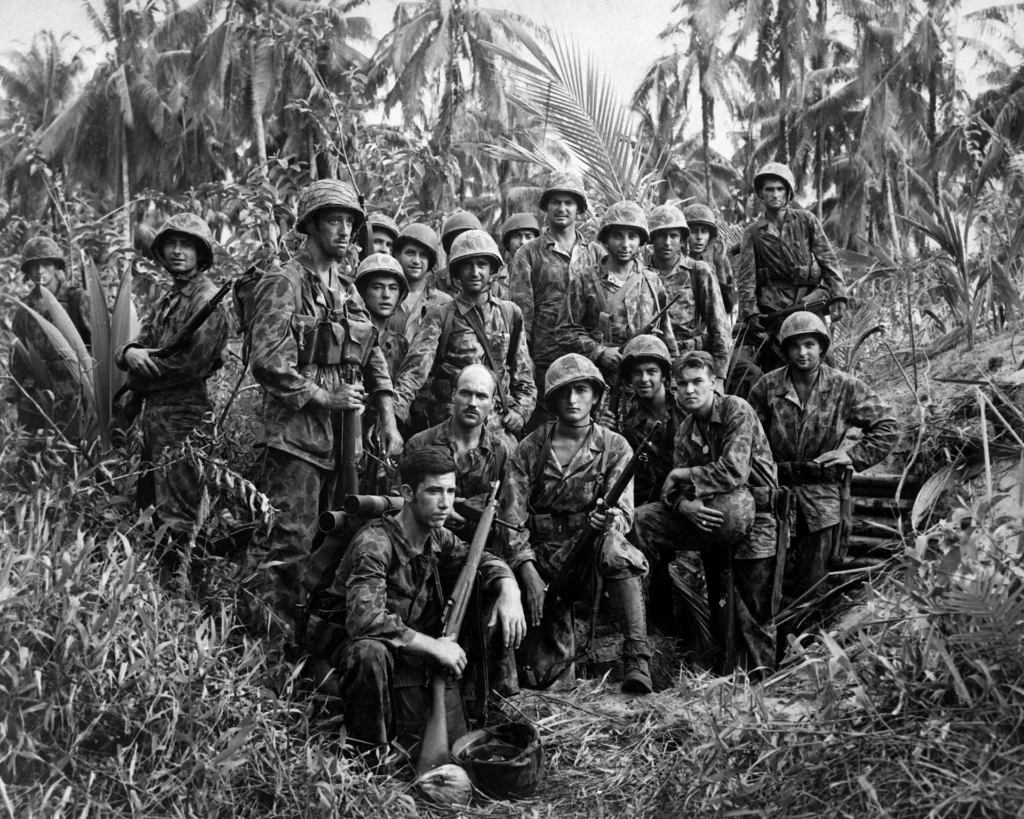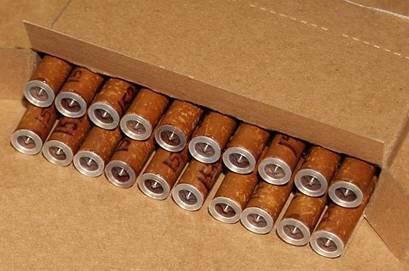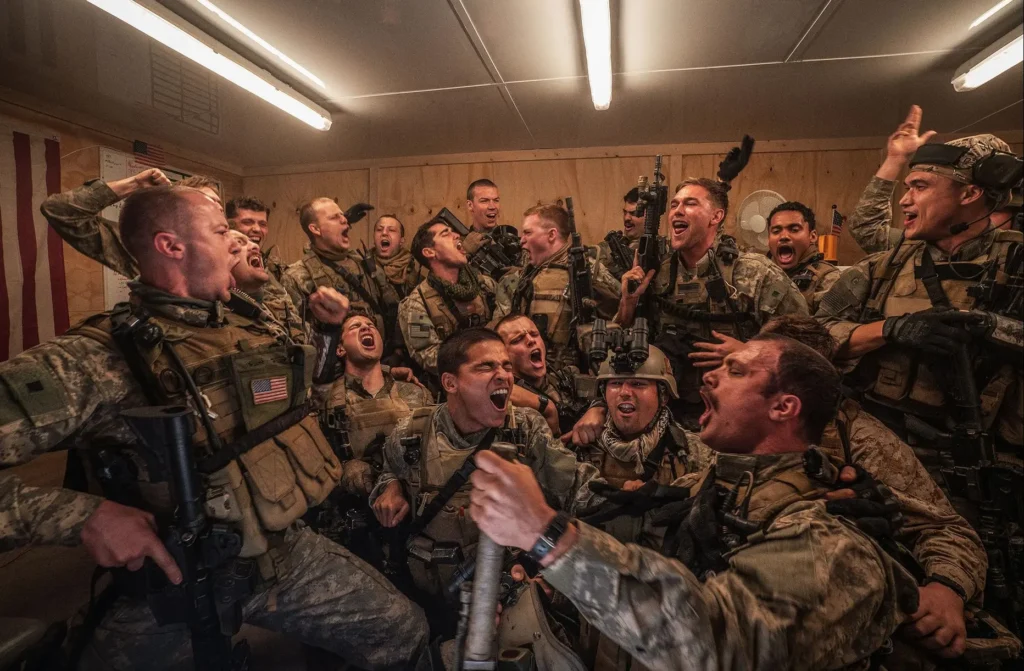These are 5 incredible facts about Carlson’s Long Patrol
- By Travis Pike
Share This Article

The Marine Raiders of World War II are arguably one of the earliest American special operations united ever created. They were a fascinating group of men who wreaked havoc on the Japanese throughout the Pacific. The Raiders were the brainchild of Evans Carlson, and they pioneered tactics and techniques still used today. I couldn’t possibly cover their entire history here, but today we are going to talk about Carlson’s Long Patrol.
Heck, I couldn’t even do the Long Patrol justice in a single article. (If you want a deep dive into Carlson and the Raiders, check out Carlson’s Raid.) Today I’m going to break down five facts about the Long Patrol.
1) An 150-miles-long patrol
The Long Patrol was a bit more than just a patrol. It was a complete special operation. However, the name stuck. Carlson and his men stepped off on November 6, 1942, and came back on December 4. For a little less than a month, they were behind enemy lines causing chaos.
They moved over 150 miles through the dense and brutal jungle, fighting not just the Japanese but disease and wildlife. This action took them up the coastline of Guadalcanal and on a rather interesting safari.
2) Gung-Ho!

The Marines were tasked with raising hell for the Japanese. On Guadalcanal, the Marines, Soldiers, and Sailors fought hard to establish Henderson Field. It was established to launch air attacks against the Japanese and was vital to the campaign.
The Japanese were harassing Henderson Field and had free reign over the island outside of the field. Lt. General Vandegrift was tired of the Japanese harassing the field and dispatched the Raiders to make their life difficult.
The Raiders would engage in guerilla warfare during the Long Patrol and make life for the free-moving Japanese chaotic. This helped relieve pressure from Henderson Field and damaged the morale and movement of the Japanese.
The Marines of the Long Patrol would assault positions, hunt Japanese forces, and ultimately destroy the freedom of movement the Japanese enjoyed around Henderson Field. The Raiders destroyed several Japanese artillery guns and even captured one. They also acted as a buffer to capture or kill retreating Japanese forces from Koli Point.
Carlson learned these tactics from observing Chinese communists in the 1930s and even brought the phrase “Gung-Ho” to the Marine Corps.
In one action, the Marines took residence in a village overnight. The Japanese were so accustomed to their freedom of movement that random Japanese soldiers would wander into the village. That night alone, the Marines killed 25 Japanese.
Related: The history of MARSOC is the history of the Marine Raiders
3) The Marine Raiders were at a big numerical disadvantage

The Marine Raiders stepped off with 267 men, as well as a force of local nationals who served as scouts and fighters. Major John Mather of the Australian Army joined them, as did Sergeant Major Jacob Vouza of the Solomon Islands Police Force. In the end, their numbers totaled 500 men who went into that dark jungle. In that jungle awaited 2,500 Japanese soldiers who had dug into the island and entrenched themselves as part of it.
Typically your attacking force should outnumber the defending force, but the Raiders weren’t that lucky. Over the next month, they killed 488 Japanese soldiers and wounded an unknown number. They lost 16 men with 17 wounded, and the local police force suffered two wounded.
The Raiders began a policy of no prisoners and even executed two prisoners. Their justifications ranged from revenge for the torture of a Marine PFC to the simple logistics that keeping a prisoner would be impossible.
Related: Letters to Loretta: Life as a World War II prisoner of war
4) The best-armed Marines on the island

Marines Raiders came to the long patrol ready to fight! They were well armed, more than their compatriots in the Marine infantry. A Raider squad was made up of 10 men. Three teams of three men and a squad leader made up a squad. Each group or team leader carried either a Thompson or Resing M50 machine gun. The automatic rifleman carried a BAR, and the third man carried an M1 rifle.
This was a lot of firepower in 1942. In the jungle, this firepower was extremely handy. The Japanese carried bolt-action rifles which were terrible in the jungle, so the Raiders’ superior firepower granted them a major advantage in the jungle. Close-range firepower is crucial in the jungle, and the Marines had it.
Related: The Bushmaster carbine – Made for the jungle
5) Six Marine Raiders defeat 100 Japanese

On November 30, the Long Patrol was near its end, but the men didn’t settle into complacency. After a mighty victory in which they destroyed a Japanese artillery piece, six of the Raiders scouting the area saw an opportunity. On the slopes of Mount Austen, they came across a 100-men-strong Japanese company sleeping without posted guards or any form of real security and with their weapons stacked in the middle of the campsite.
Corporal John Yancey who was leading the scouting team decided they had to attack. They rushed in with their Thompsons and BARs roaring away. They killed 75 of the 100 men, with the rest fleeing into the jungle.
The end of the Long Patrol
At the end of the patrol, Carlson’s Raiders returned to friendly lines as weathered and beaten men. While they had lost several Raiders, the primary source of casualties was the brutal condition of the jungle.
Lt. Cleland Early said this about the end of the patrol. “Enduring the living conditions was worse than the combat. My platoon went in with 30 men, one corpsman, and one officer. When we came out we had one officer, one corpsman, and 18 enlisted, all of whom had malaria, worms, diarrhea, jungle rot and high morale.”
The patrol was over, but the war wasn’t won, and the Raiders went back to work, making the Marine Corps and the country proud.
Feature Image: Marine Raiders gathered in front of a Japanese dugout on Bougainville Island in the Solomon Islands. (Wikimedia Commons)
This article was originally published in November 2022. It has been edited for republication.
Read more from Sandboxx News
- China’s new Fujian carrier reignites the Great Aircraft Carrier debate
- Exploring the CMG, Colt’s forgotten machine gun
- Video: Let’s talk about Ukrainian F-16s seeing action for the first time
- Runaway costs and design delays: Are Coast Guard’s new icebreakers worth it?
- The implications of Ukraine’s invasion of Russia
Related Posts
Sandboxx News Merch
-

‘AirPower’ Classic Hoodie
$46.00 – $48.00 Select options This product has multiple variants. The options may be chosen on the product page -

‘Kinetic Diplomacy’ Bumper Sticker (Black)
$8.00 Add to cart -

‘Sandboxx News’ Trucker Cap
$27.00 Select options This product has multiple variants. The options may be chosen on the product page

Travis Pike
Travis Pike is a former Marine Machine gunner who served with 2nd Bn 2nd Marines for 5 years. He deployed in 2009 to Afghanistan and again in 2011 with the 22nd MEU(SOC) during a record-setting 11 months at sea. He’s trained with the Romanian Army, the Spanish Marines, the Emirate Marines, and the Afghan National Army. He serves as an NRA certified pistol instructor and teaches concealed carry classes.
Related to: Military History, Special Operations

The five best bayonets still in use around the world

The M10 Booker and how the Army flubbed a tank

Caseless ammo could be the future of cartridges

‘Warfare’ shows the brutal reality of combat for an elite unit
Sandboxx News
-

‘Sandboxx News’ Trucker Cap
$27.00 Select options This product has multiple variants. The options may be chosen on the product page -

‘AirPower’ Classic Hoodie
$46.00 – $48.00 Select options This product has multiple variants. The options may be chosen on the product page -

‘AirPower’ Golf Rope Hat
$31.00 Select options This product has multiple variants. The options may be chosen on the product page -

‘Sandboxx News’ Dad Hat
$27.00 Select options This product has multiple variants. The options may be chosen on the product page
